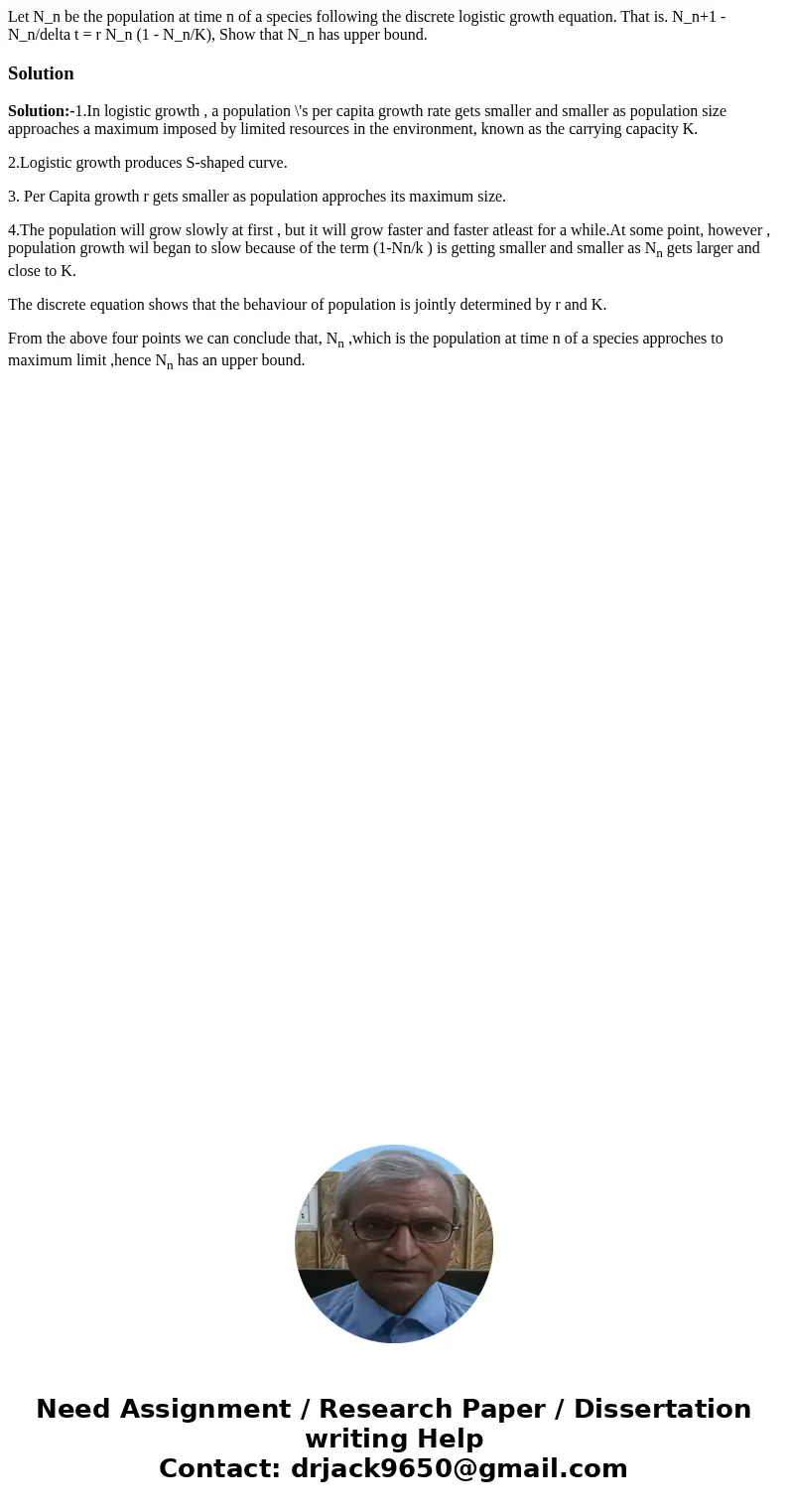Let Nn be the population at time n of a species following th
Solution
Solution:-1.In logistic growth , a population \'s per capita growth rate gets smaller and smaller as population size approaches a maximum imposed by limited resources in the environment, known as the carrying capacity K.
2.Logistic growth produces S-shaped curve.
3. Per Capita growth r gets smaller as population approches its maximum size.
4.The population will grow slowly at first , but it will grow faster and faster atleast for a while.At some point, however , population growth wil began to slow because of the term (1-Nn/k ) is getting smaller and smaller as Nn gets larger and close to K.
The discrete equation shows that the behaviour of population is jointly determined by r and K.
From the above four points we can conclude that, Nn ,which is the population at time n of a species approches to maximum limit ,hence Nn has an upper bound.

 Homework Sourse
Homework Sourse